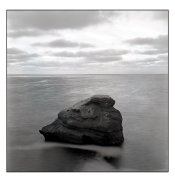It is important to understand what under and over exposure actually mean and there are several ways to define this.
1 In relation to a standardized process.
2 By what's available on the negative.
In the standard processing world the expectation is that if the camera exposure is right then the negative should "print" or "scan" perfectly using a standardized process, no manipulation required. Slides and JPEG shooting are the classic examples of this style. Over and underexposure are anything that falls outside the norm. "In studio" where lighting is completely controlled, it is normal to be able to use a standard process but in non-studio photography, this exactness is the rare exception rather than the rule.
Negatives don't work like slides and JPEGs. Negatives typically catch a lot more info than is printed, the output mediums available to us simply cannot represent as wide a range of info as a negative can. Acros for example may be able to record detail across a range of 12-14 f-stops or more, paper and monitors can typically only show a 6-8 f-stop range. So half the info from an Acros negative may "straight print", it takes some form of manipulation to get the other half to "print". This is normal for negative films, it is why it is said that negatives have great "latitude".
A negative is only truly underexposed if the shadow detail you wanted simply isn't there or is too far down on the toe to be usable, if you can dodge and get the detail you want in the shadows the negative isn't underexposed.
Similarly if you can burn in the highlight details to get what you want, the negative isn't over exposed.
The disposable cameras that we can get at the grocery store use a negative film's latitude to make shooting simple, no need to adjust camera settings. When the film is scanned or printed the person (or software) doing the work simply chooses which 6-8 stop range to print from the negative.
With negatives you can very often underexpose by 1 stop. On the over side you may be able to go as much as 3-4 over. You need to experiment to find your personal limits.











